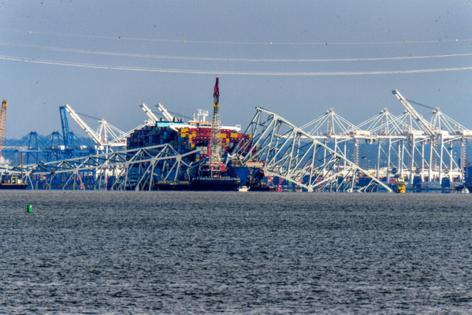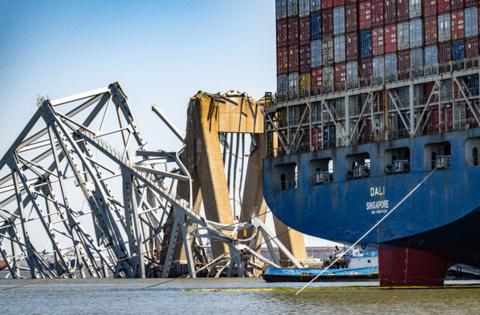Several dozen ships lost propulsion in Maryland waters before Key Bridge collapse: 'You're basically just drifting'
Published in News & Features
BALTIMORE — After delivering a load of sugar to the Domino refinery in Baltimore’s Inner Harbor two winters ago, a 567-foot bulk carrier departed for Georgia but didn’t get very far before experiencing engine trouble.
Not long after the Nazenin sailed underneath the Francis Scott Key Bridge, a mechanical malfunction cut the flow of cooling water to the ship’s main engine, disrupting the ship’s propulsion. Its crew dropped anchor just outside the channel in the Patapsco River to make quick repairs, according to a Coast Guard incident report.
Having replaced a “cracked cylinder liner” the Coast Guard attributed to poor maintenance, the Nazenin sailed south to the Annapolis Anchorage, just south of the Chesapeake Bay Bridge for the repair to be inspected. A day later after it resumed its voyage south in the Bay, the ship’s “oiler on watch,” who the report said was inadequately trained, made an error that caused it to lose propulsion again and it had to drop anchor again.
Crisis was averted both days, despite the ship twice being rendered mostly adrift not far from bridges providing passage to tens of thousands of motorists daily. At least 40 other times since 2021, cargo vessels experienced a complete loss, or reduction of, propulsion, power or steering while sailing in Maryland waters, according to a Baltimore Sun analysis of Coast Guard reports.
Those incidents are rare — hundreds of ships call in Baltimore every year — and generally minor. They happen at the dock or tugs assist the ship or it drops anchor harmlessly, but catastrophe came in the early morning of March 26, when a massive cargo ship apparently lost all power while approaching the Key Bridge and crashed into one of its critical support piers. The span collapsed immediately, sending six construction workers filling potholes plummeting to their deaths, indefinitely disrupting Baltimore’s busy port and permanently altering the skyline.
What went wrong aboard the Dali, the 984-foot ship that weighed 112,000 tons when it struck the bridge, and whether it could or should have been prevented, is the question at the center of parallel probes by the National Transportation Safety Board and the FBI. The former investigates with an eye toward preventing another tragedy, while the latter looks for potential criminal charges.
Experts believe the Dali suffered a blackout, or a complete loss of propulsion and electrical power, as it approached the bridge. Such events are rare, but not unheard of. A ship losing propulsion, or the ability to turn the propellers that drive vessels forward or backward, is more common but still statistically unusual. Both can be terrifying.
“It means you’re dead in the water,” said Thomas Roth-Roffy, a former NTSB marine investigator of almost two decades and a Coast Guard licensed chief engineer. “You can’t go ahead or astern, you’re basically just drifting. And depending on how long the propulsion failure lasts, you can run into big problems: grounding, collision or allisions with bridges.”
At the same time, vessels losing propulsion have rarely been publicly noteworthy. Oftentimes, experts say, it happens at sea, where the risk of crash or casualty is low, and well-trained engineering crews usually can make repairs before anything bad happens.
“It’s all about timing, time and place,” said Kevin Calnan, an assistant professor of marine transportation at the California State University Maritime Academy. “Normally when this happens you’re in the open sea in the middle of the Atlantic or Pacific Ocean, and it’s not really such a problem. You’re just going to float until you can get things figured out.”
...continued
©2024 Baltimore Sun. Visit baltimoresun.com. Distributed by Tribune Content Agency, LLC.










Comments